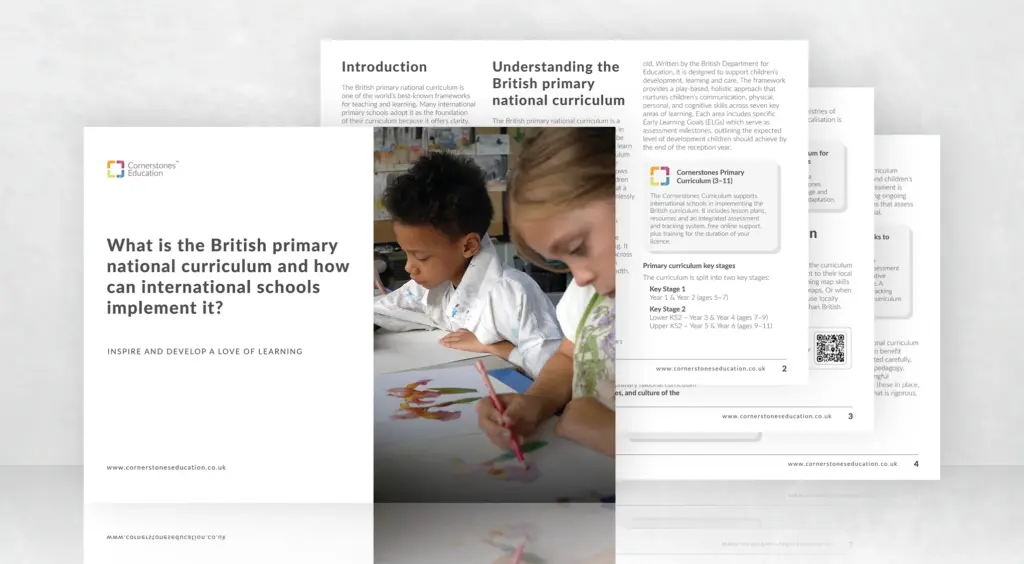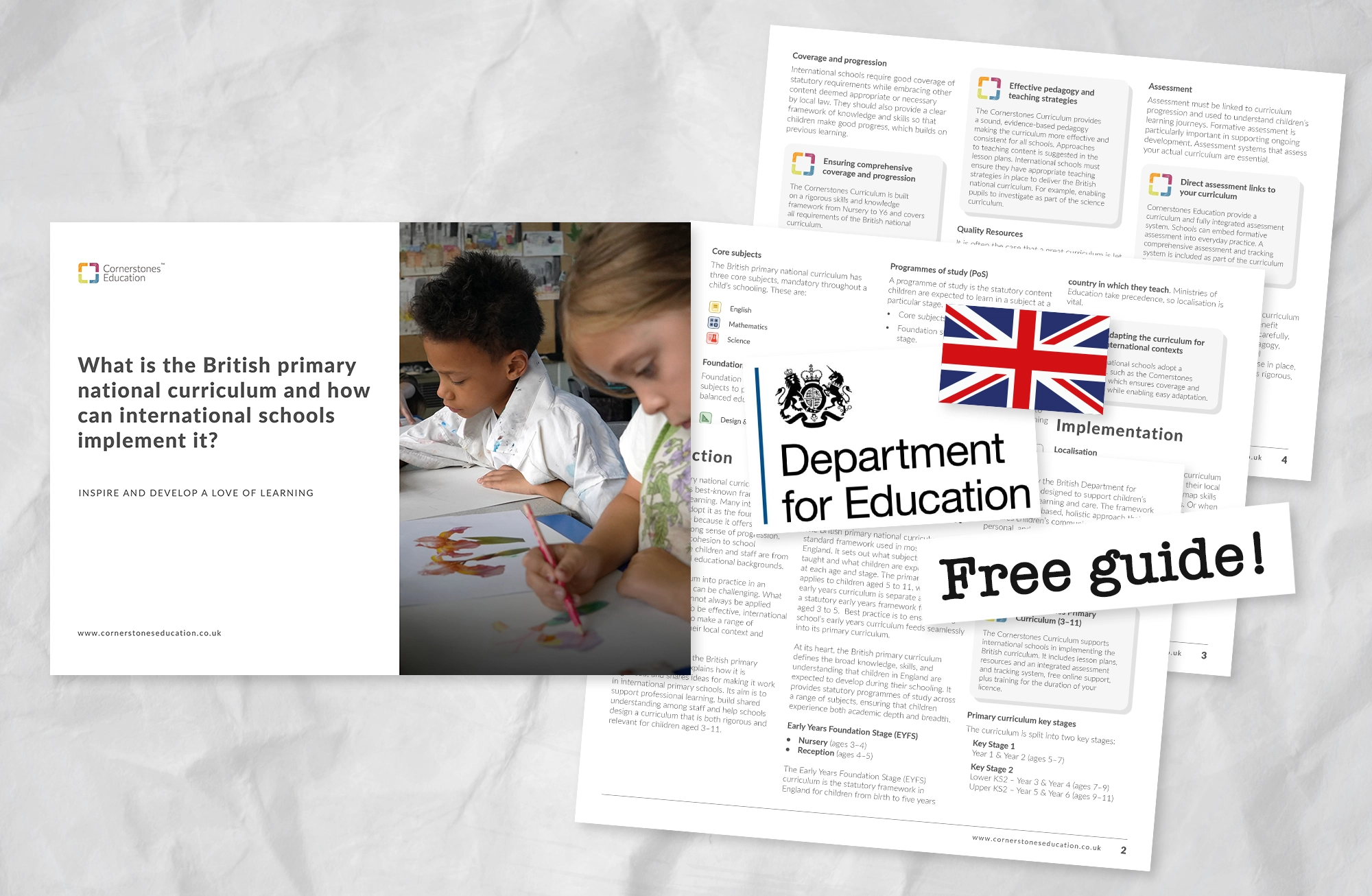Across the world, international schools strive to offer a curriculum that is both academically rigorous and deeply relevant to their diverse communities. The British primary national curriculum remains a trusted framework for achieving that by combining structure, clarity and progression with the flexibility to adapt to local contexts.
However, adopting the British national curriculum outside the UK brings unique challenges. What works in an English classroom may not translate to an international setting. School leaders must consider how to localise content, align with national expectations, and ensure that every child, regardless of background, thrives.
Our new guide, What is the British Primary National Curriculum and How Can International Schools Implement It? is designed to support that journey. It provides a clear overview of the curriculum’s structure, from the Early Years Foundation Stage through to Key Stages 1 and 2, and offers practical insights into implementation, localisation, pedagogy, assessment, and resourcing.
Why do international schools choose the British national curriculum?
The British national curriculum outlines what children aged 5 to 11 should learn across a broad range of subjects, including English, mathematics, science, art & design, geography, and design & technology. It ensures both depth and breadth, helping schools design a curriculum that builds knowledge and skills in carefully sequenced steps.
For the early years, the EYFS framework provides a basis on which early years settings can build a range of learning experiences.
Adapting for local relevance
In international contexts, curriculum success depends on effective localisation, making learning meaningful by connecting it to the local environment and culture. Whether it’s using local maps in geography or native plants in art, contextual adaptation is key to ensuring engagement and cultural relevance.
Our guide also explores the importance of pedagogy, the art and science of teaching and how a shared, evidence-based approach can bring consistency, quality, and creativity to the classroom.
Building coherence through quality curriculum design
Schools implementing the British curriculum benefit from structured frameworks like the Cornerstones Curriculum, which supports comprehensive coverage of statutory requirements while integrating high-quality resources, assessment systems, and professional learning opportunities. With a clear focus on knowledge progression, formative assessment, and engaging content, schools can build a curriculum that is both inspiring and robust. Perhaps most importantly, at Cornerstones, international schools have a dedicated adviser to help them with implementation and ongoing support.
A curriculum that inspires
When the British national curriculum is thoughtfully implemented by highly skilled teachers, it can be effective in international settings. By choosing a partner such as Cornerstones to implement and develop it, the curriculum can help any international setting achieve the highest of standards.
Download your free copy of the guide today to explore how your international school can successfully implement the British primary national curriculum, creating a curriculum that is rigorous, relevant and ready for your unique community.



